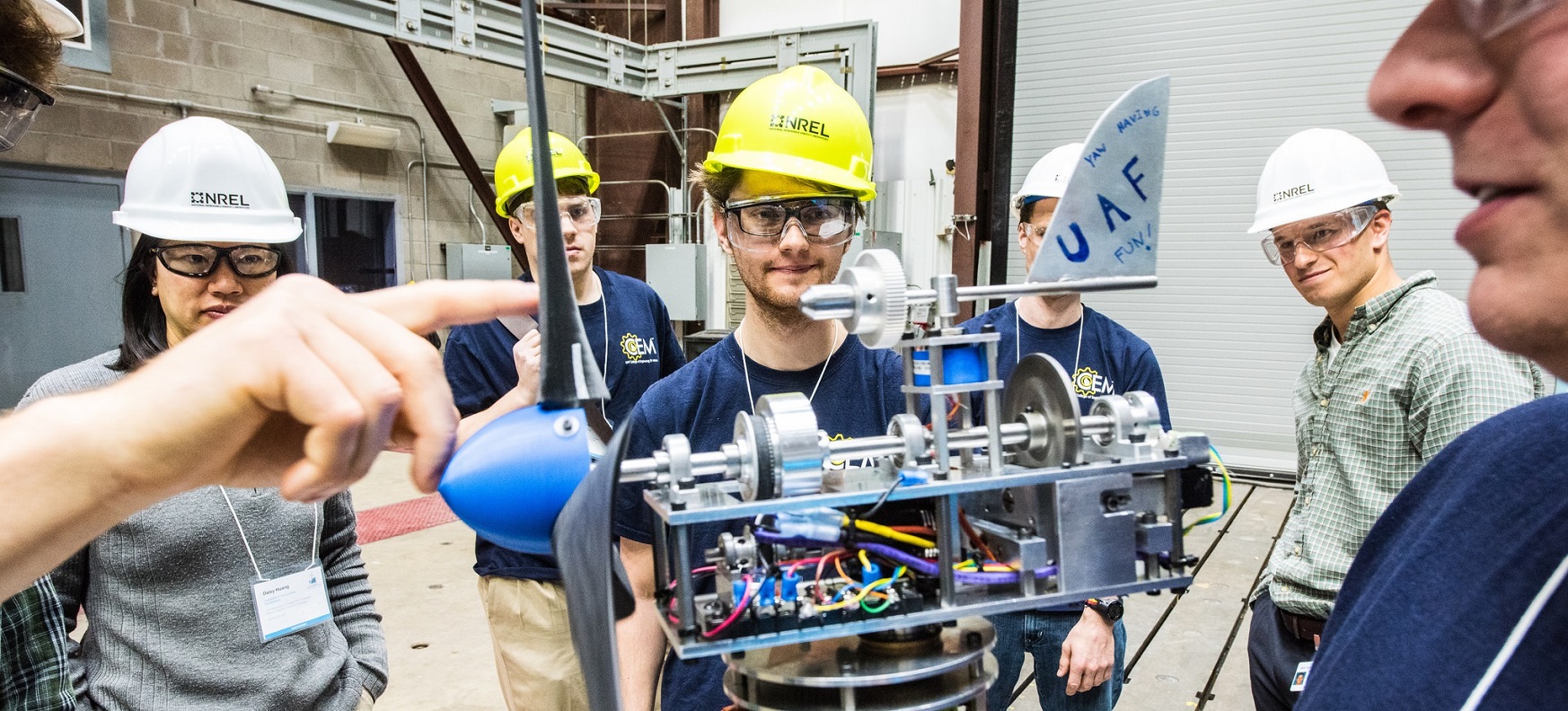Wind Energy's Next Generation Competes in the Collegiate Wind Competition

A photo of students from the University of Alaska Fairbanks preparing their wind turbine for testing at the Collegiate Wind Competition. Photo by Dennis Schroeder / NREL
Last month, 10 college teams from around the country convened at the National Wind Technology Center (NWTC) at the National Renewable Energy Laboratory to participate in the U.S. Department of Energy Collegiate Wind Competition 2017 Technical Challenge. The participating teams included:
- Boise State University
- California State University-Maritime Academy
- California State University-Chico
- Kansas State University
- Northern Arizona University
- The Pennsylvania State University
- University of Alaska-Fairbanks
- University of Massachusetts-Amherst
- University of Maryland
- University of Wisconsin-Madison.
The competition, which took place April 20–22, 2017, not only showcased a variety of wind turbine designs and diverse teams, but highlighted the brilliance and agility of the students involved in the competition and their ability to think on their feet when things did not quite go according to plan.
When their electrical circuit brake was not functioning correctly during practice testing in the NWTC wind tunnel, California State University-Maritime Academy did what any industrious team of students would do: they went to the local Home Depot, purchased the most powerful fan they could find, and turned their hotel room into a makeshift wind tunnel. Not assuaged by the flickering power in the room every time they powered up the fan, the students were able to use it to get the electric brake functioning by testing time the next day.
When Kansas State University began testing their turbine in earnest on Friday, the judges noticed that the base plate did not match the specifications laid out in the rules and regulations. The rules called for a 6-inch diameter and the Kansas State University baseplate was a 6-inch-by-6-inch square. To avoid being disqualified, the team found a sturdy hacksaw and solid bench vice and went to work sawing the corners of their baseplate off to comply with regulations.
But the weekend was not only turbine testing: teams participated in a siting challenge by Erin Degutis from Xcel Energy and Luke Reed of Renewable Energy Systems, Americas, attended educational sessions discussing the history of wind turbines and grid systems integration, and took a tour of the NWTC.
Ultimately, Penn State earned the top spot (first place overall and in the tunnel testing contest)—its third Collegiate Wind Competition victory. Second place went to Kansas State University and University of Alaska-Fairbanks took third place. University of Maryland won the technical design contest and University of Wisconsin-Madison won the siting challenge, which came down to a one-point differential between first and second place. Northern Arizona University earned an honorable mention from the competition judges for their technical design presentation.
In addition to the Collegiate Wind Competition, elementary and middle school students also gathered at the NWTC to participate in the Colorado KidWind Challenge. The winners of the challenge—the “STEM Launchers” from Adams School District just north of Denver—will go on to attend the national challenge being held in Anaheim, California, during the American Wind Energy Association’s WINDPOWER conference.
Last Updated May 28, 2025
